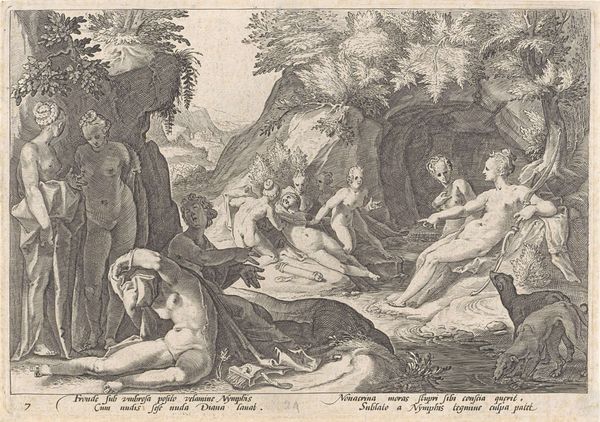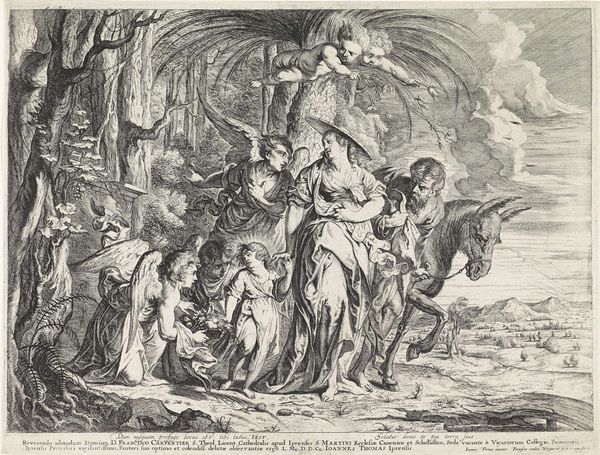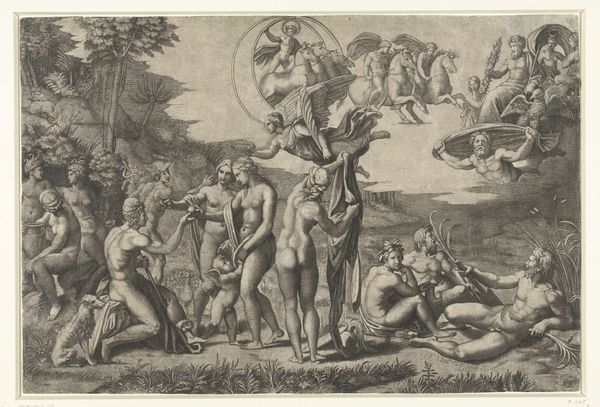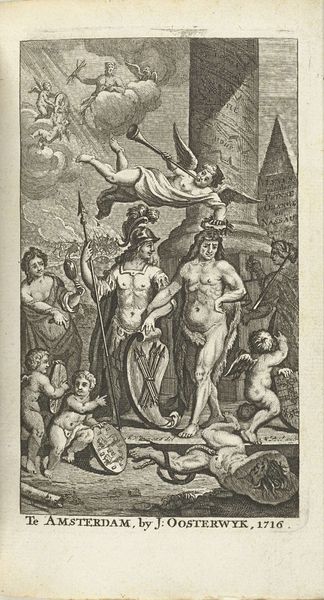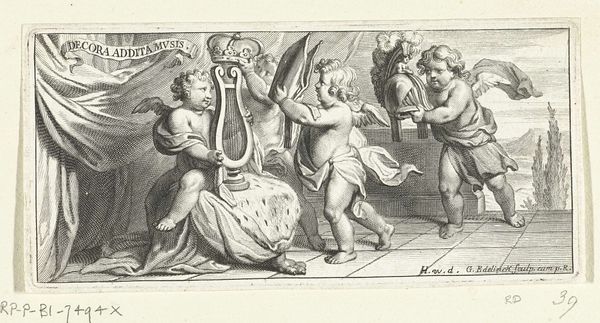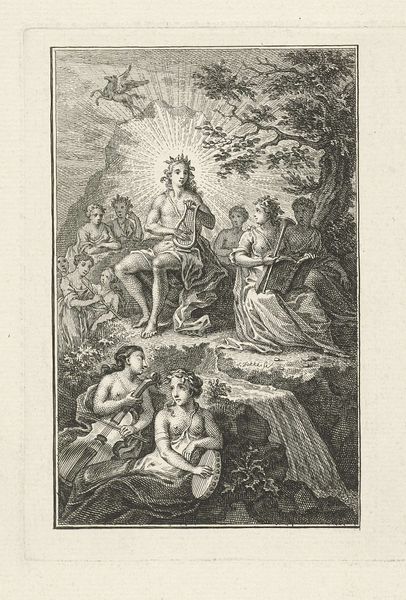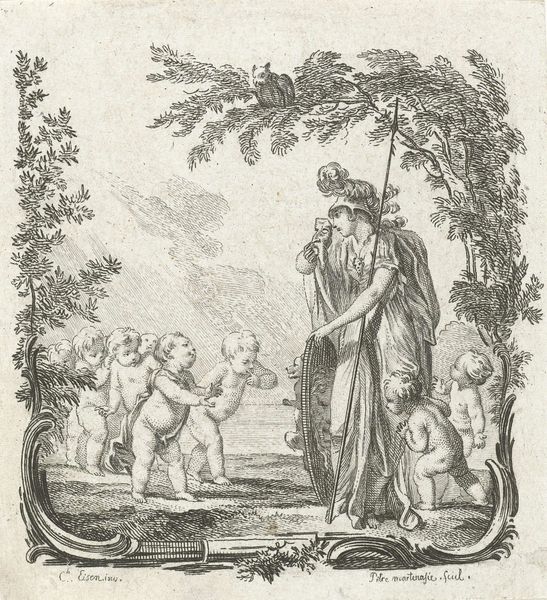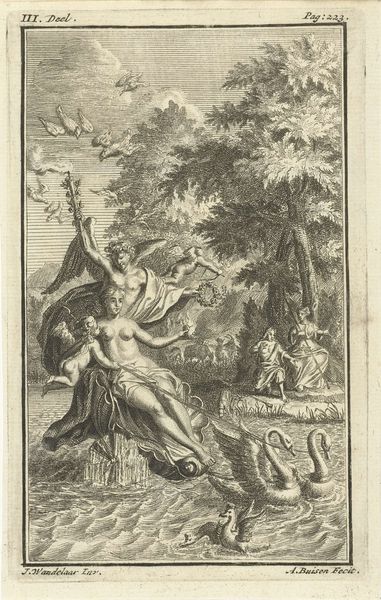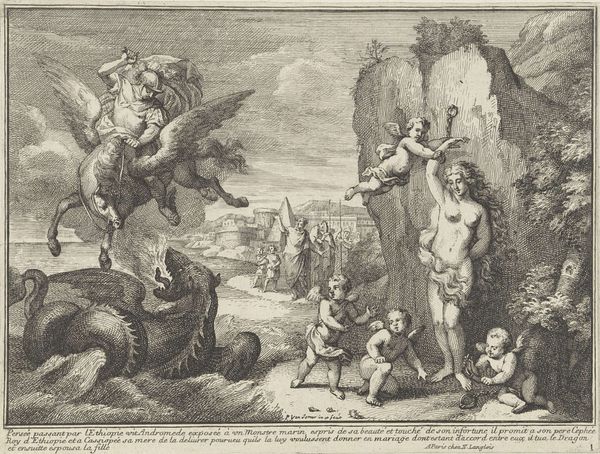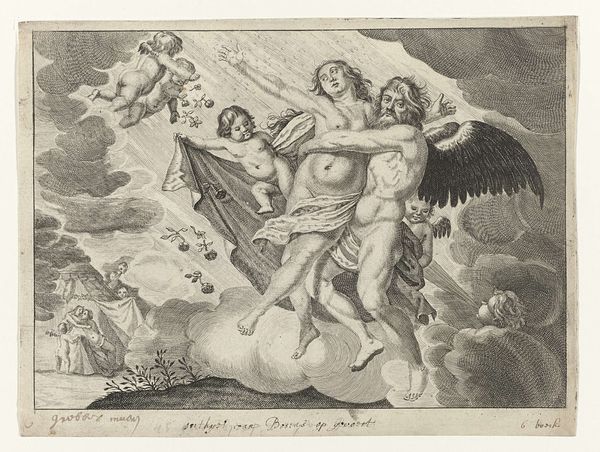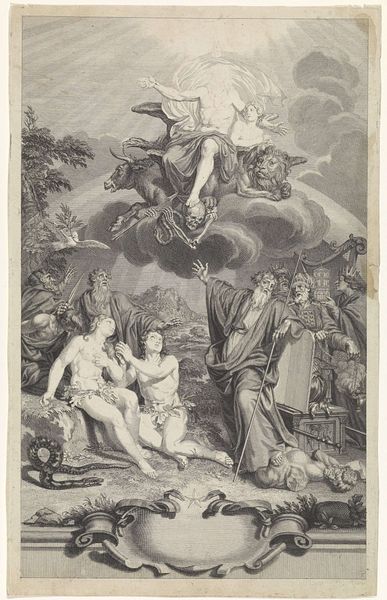
Allegorische voorstelling met de naakte Waarheid en dansende figuren 1775
0:00
0:00
reiniervinkeles
Rijksmuseum
Dimensions: height 61 mm, width 85 mm
Copyright: Rijks Museum: Open Domain
Editor: Here we have Reinier Vinkeles' engraving from 1775, “Allegorical Representation with the Naked Truth and Dancing Figures," which I find really fascinating. It’s an explosion of symbolism but seems to follow conventions. What do you see in this piece? Curator: I see the persistence of an ancient impulse. From cave paintings to contemporary art, we seek to visualize abstract concepts, giving them form, feeling, and narrative. Note how the nude Truth, radiating light, stands apart, almost ethereal. The dancing figures clustered below feel earthbound in contrast. Does this separation resonate with you? Editor: Definitely. The Truth floats away on the left, untouchable. How might viewers from the 18th century, Vinkeles's time, understood those symbols compared to us today? Curator: In the 18th century, allegories like this one were very common ways to discuss complicated ideas indirectly. A person of the time would instantly recognise each element, which carried culturally coded weight. Take the plumed helmet worn by the central figure – does that immediately speak to you, or would you need help associating the symbol with war? Editor: Yes, of course, the helmet represents war, it feels classic and instantly makes me think of battles and mythology. And now, seeing this helmet it reminds me how powerful it could have been when seeing it back then. Curator: Exactly! Think about cultural memory being passed down by images. Vinkeles taps into centuries of associations. What does it make you consider about our own time and the imagery that surrounds us daily? Editor: I see this engraving as a reminder that even today, our visual world is full of signs, layered with meaning, shaping how we see and understand the world. Curator: Precisely! Images persist. And their symbols… continue to shape us all.
Comments
No comments
Be the first to comment and join the conversation on the ultimate creative platform.
